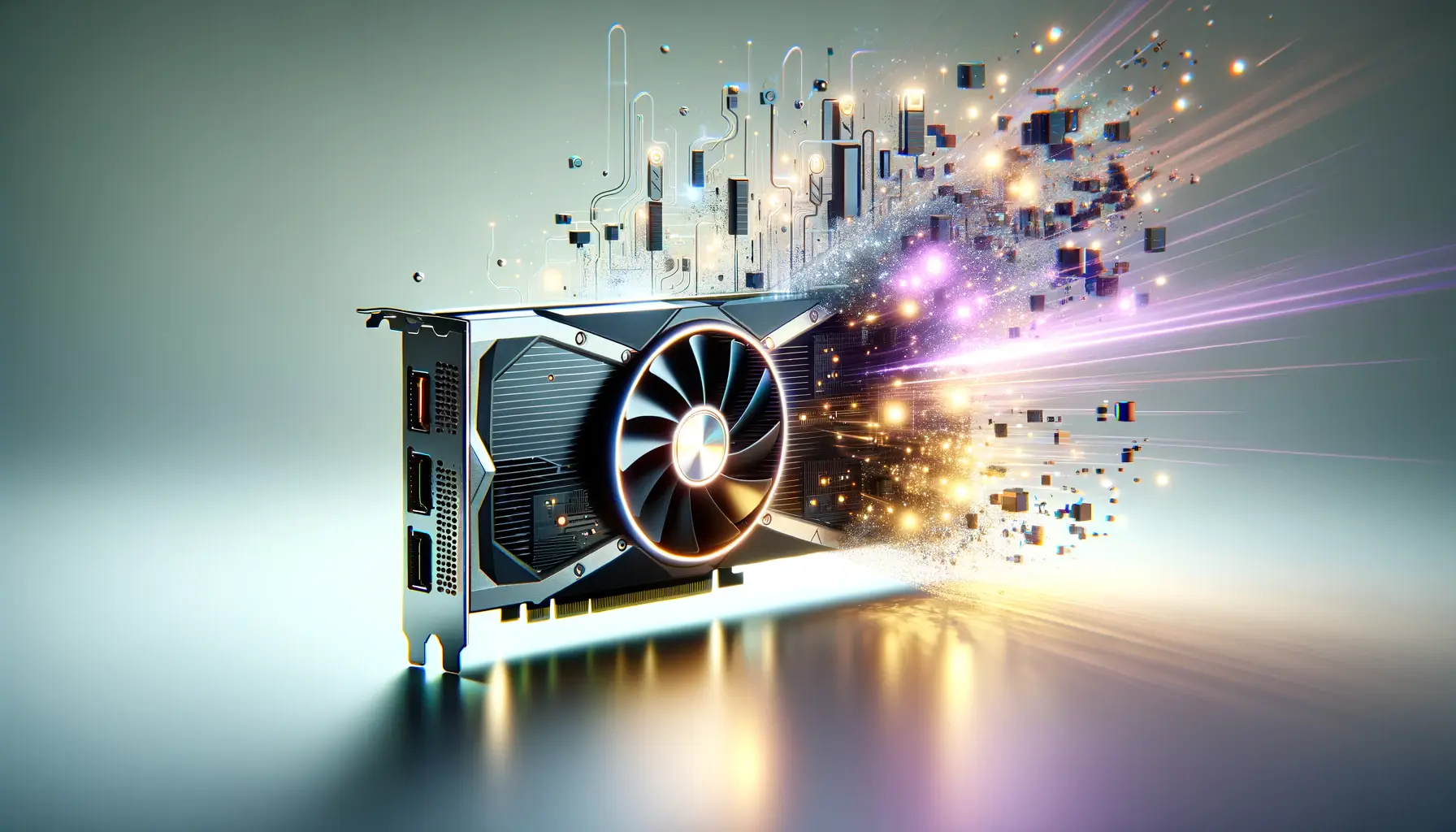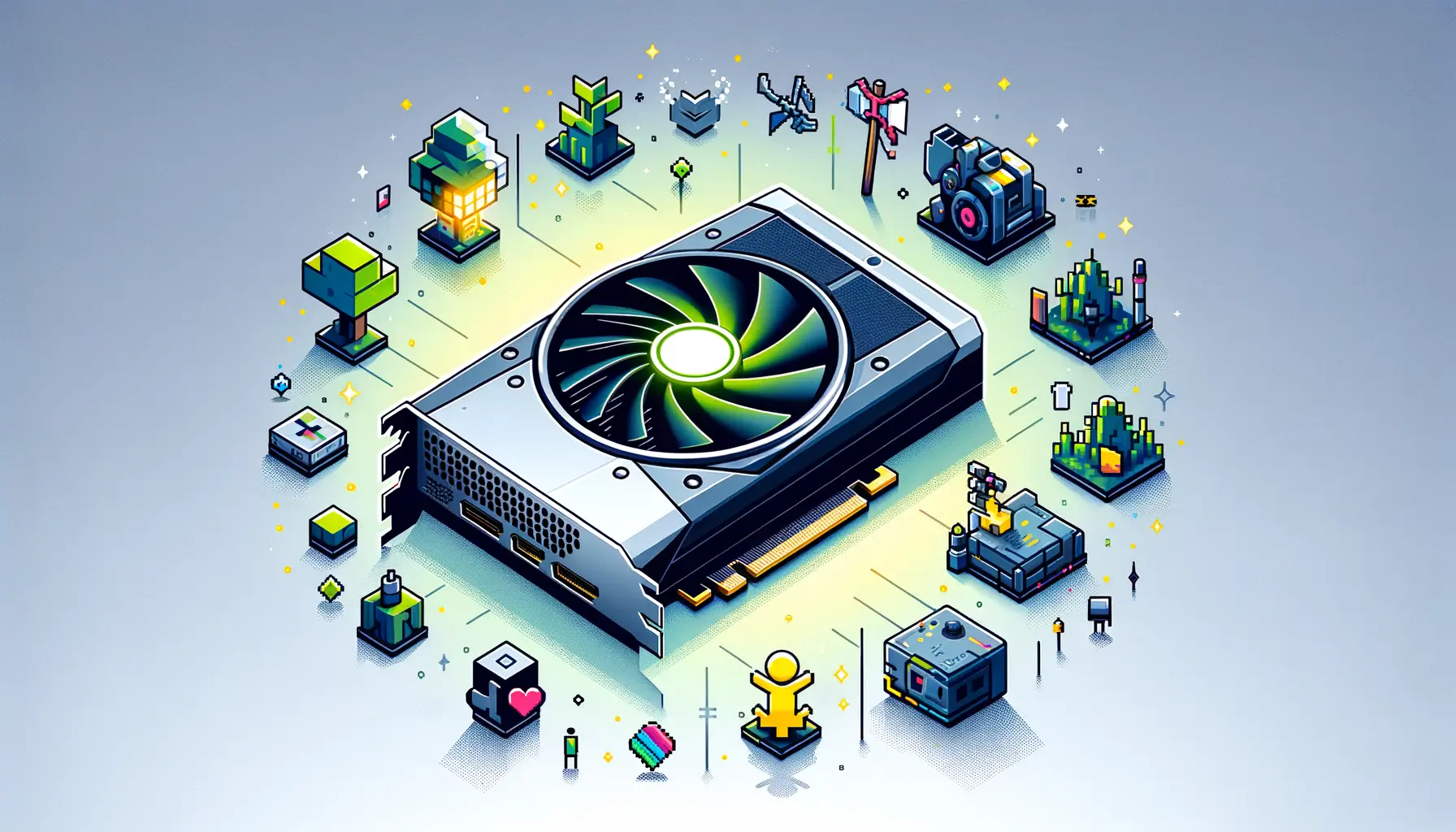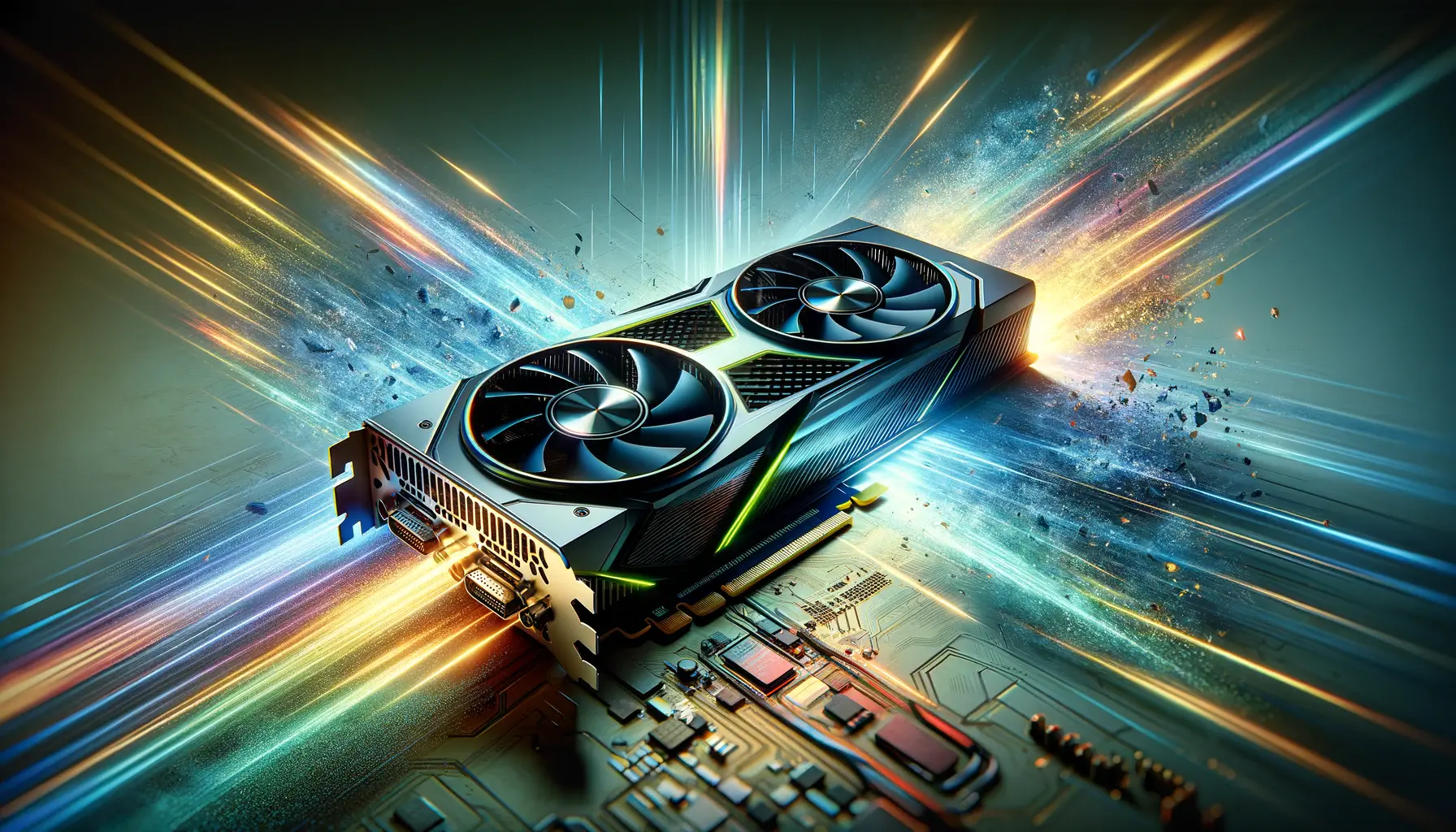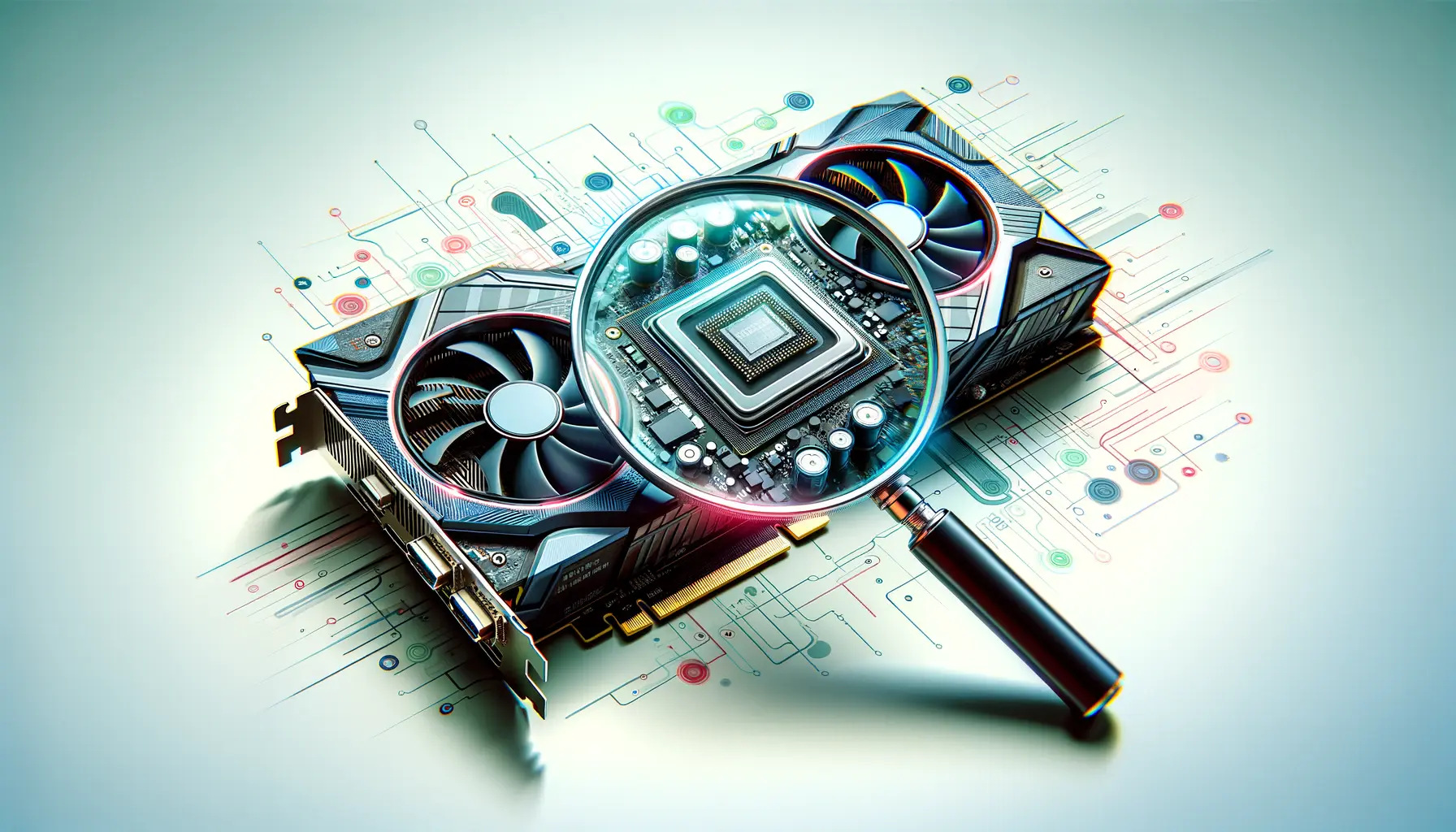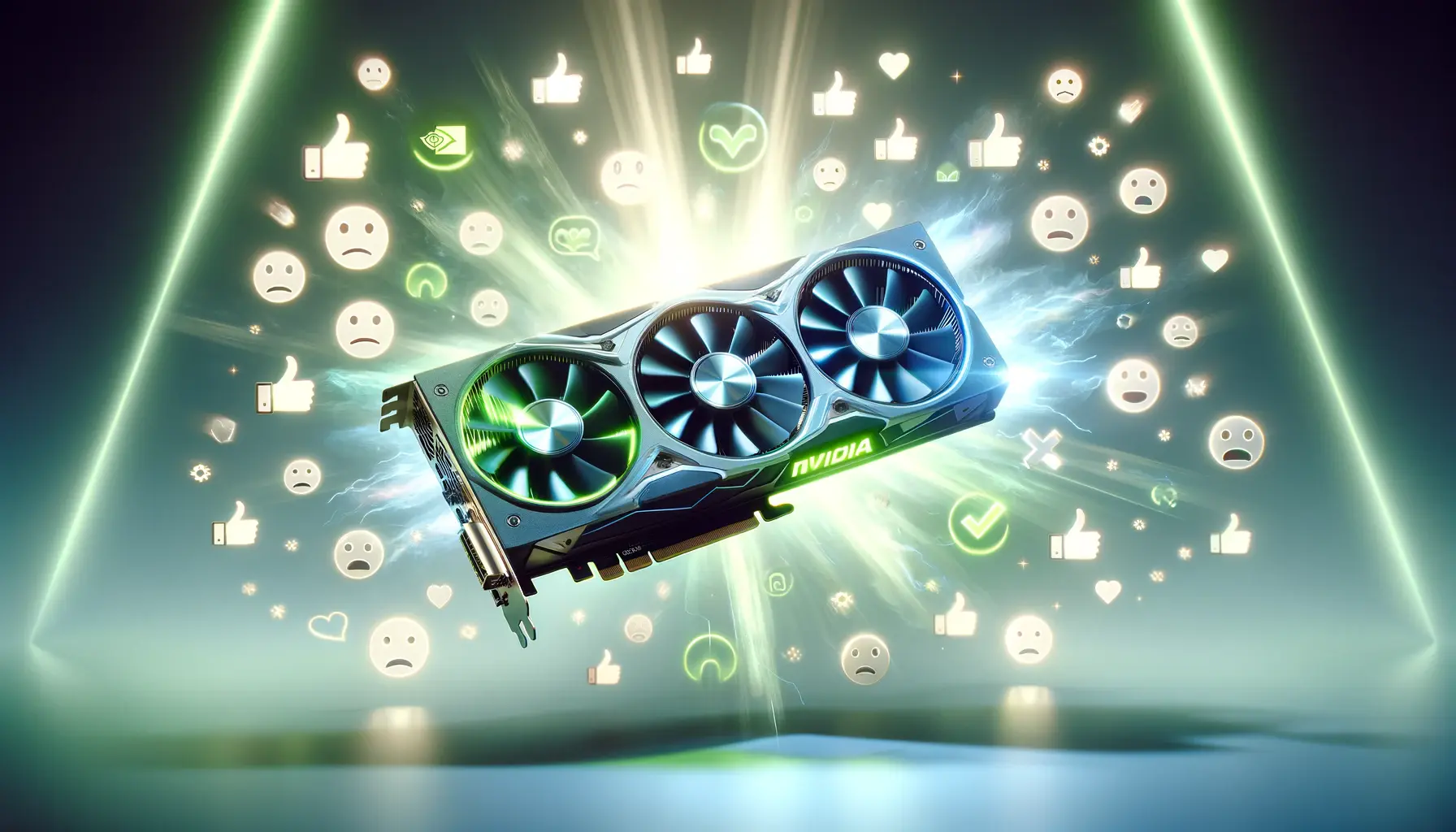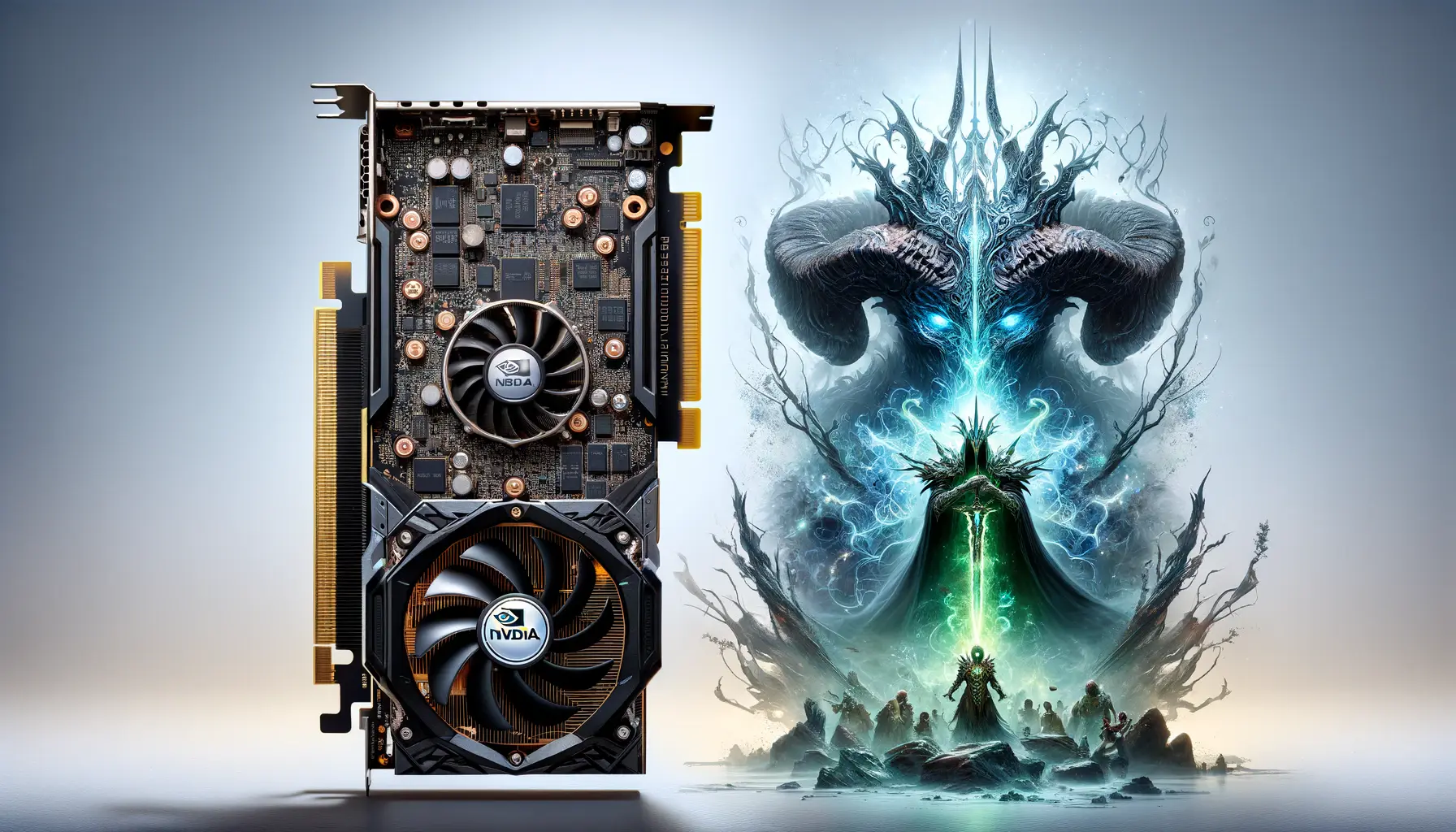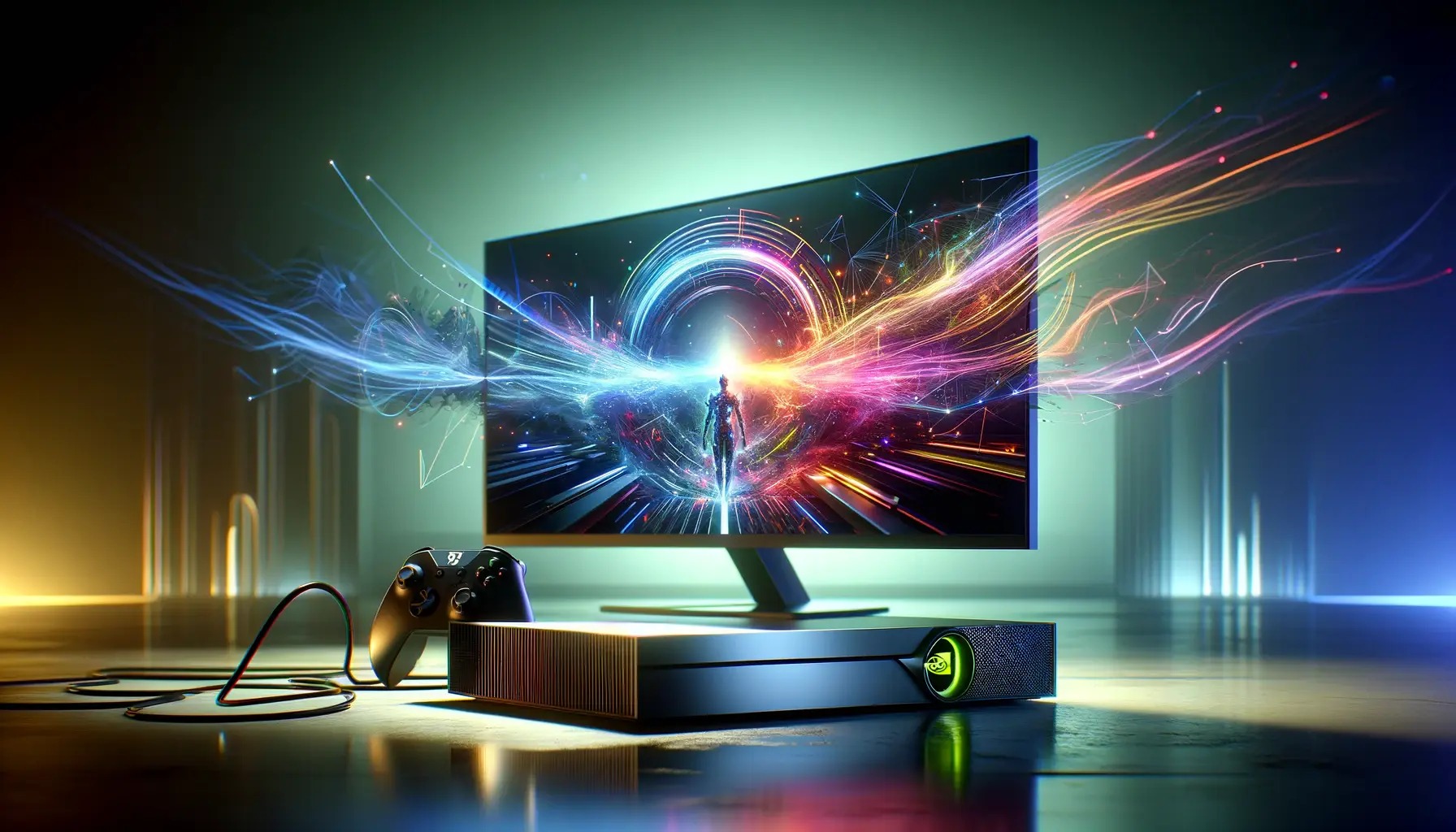The realm of gaming and graphical rendering is on the brink of a significant transformation, thanks to NVIDIA’s latest innovation, DLSS 3.
This groundbreaking technology, standing for Deep Learning Super Sampling, represents the third iteration of NVIDIA’s AI-driven approach to enhancing gaming visuals and performance.
DLSS 3 leverages the power of artificial intelligence to not only upscale images for better graphical fidelity but also to boost frame rates, making games look and run better than ever before on supported hardware.
At its core, DLSS 3 is a testament to NVIDIA’s commitment to pushing the boundaries of what’s possible in gaming graphics.
By utilizing advanced AI algorithms and the dedicated Tensor Cores found in GeForce RTX GPUs, DLSS 3 offers a glimpse into the future of gaming where visuals are not just seen but experienced in a whole new light.
This technology is not merely an incremental update; it’s a complete overhaul aimed at redefining gaming realism and immersion.
- Understanding DLSS Technology
- The Technical Brilliance of DLSS 3
- DLSS 3’s Impact on Game Development
- DLSS 3 and the Gaming Ecosystem
- Comparing DLSS 3 with Previous Versions
- DLSS 3 in Real-World Gaming Scenarios
- Future Directions for DLSS Technology
- Embracing the Future with DLSS 3
- DLSS 3: Your Questions Answered
Understanding DLSS Technology
The Evolution of DLSS
DLSS, or Deep Learning Super Sampling, has evolved significantly since its introduction.
The journey from DLSS 1.0 to the latest DLSS 3 version showcases NVIDIA’s relentless pursuit of excellence in gaming technology.
Each iteration has brought about improvements in image quality, efficiency, and performance, with DLSS 3 setting a new benchmark.
This evolution reflects NVIDIA’s dedication to leveraging AI for enhancing gaming experiences, making each version smarter, faster, and more capable of delivering stunning visuals without compromising on performance.
DLSS technology utilizes neural networks to analyze thousands of game frames and learn how to produce sharper images from lower-resolution inputs.
This AI-driven process allows games to run at higher frame rates by rendering fewer pixels and then using DLSS to upscale the images to the desired resolution.
The result is a significant improvement in performance with minimal loss in visual quality, enabling gamers to enjoy their favorite titles at higher settings or resolutions than would otherwise be possible.
How DLSS 3 Enhances Gaming Experience
DLSS 3 introduces several key innovations that further enhance its impact on gaming.
One of the most significant advancements is the introduction of frame generation technology, which works alongside the super sampling process.
This new feature enables the AI to not only upscale images but also to intelligently generate intermediate frames.
This capability dramatically increases frame rates, making games feel smoother and more responsive, especially in fast-paced scenarios where every millisecond counts.
Moreover, DLSS 3’s AI-driven approach ensures that the upscaling process is more accurate and efficient, with improved edge smoothing and detail preservation.
Gamers can now experience their favorite games with unparalleled clarity and smoothness, bringing them closer to the action than ever before.
This leap in performance and quality is a game-changer, particularly for competitive gamers who rely on every advantage they can get to outperform their opponents.
DLSS 3 represents a significant leap forward in AI-driven gaming technology, offering unprecedented improvements in both performance and visual quality.
The Technical Brilliance of DLSS 3
The introduction of DLSS 3 by NVIDIA marks a pivotal moment in the evolution of gaming technology, showcasing a blend of innovation and technical prowess.
This section delves into the intricate workings of DLSS 3, highlighting its components and the AI-driven processes that set it apart from previous versions.
At the heart of DLSS 3’s effectiveness is its sophisticated AI network, trained on NVIDIA’s supercomputers.
This network is adept at predicting and generating high-quality images from lower-resolution inputs, a process that is both complex and fascinating.
The technical brilliance of DLSS 3 can be broken down into several key components, each contributing to its overall success in enhancing gaming visuals and performance.
Key Components of DLSS 3
- Fourth-Generation Tensor Cores: These specialized cores are designed to accelerate AI computations, enabling DLSS 3 to perform its upscaling tasks more efficiently and with greater precision.
- Optical Flow Accelerator: A new addition to the DLSS suite, this component works to accurately predict motion within a game, facilitating the AI’s ability to generate intermediate frames for smoother animations.
- AI-Powered Frame Generation: Perhaps the most groundbreaking feature of DLSS 3, this allows the technology to not only upscale images but also create new frames entirely, boosting frame rates without the need for additional hardware power.
How DLSS 3 Works
The operation of DLSS 3 is a testament to NVIDIA’s engineering and AI research.
Initially, the technology analyzes two consecutive frames of a game, identifying patterns and predicting future frames.
This analysis is powered by the aforementioned fourth-generation Tensor Cores and Optical Flow Accelerator, which together provide the computational power and efficiency required for real-time processing.
Once the AI has a grasp of the motion and details within these frames, it proceeds to generate new frames that are inserted between the original ones.
This process, known as frame generation, effectively doubles or even quadruples the perceived frame rate, making games run smoother than ever before.
The result is a seamless gaming experience, with fluid motion and sharp visuals, even on displays with high refresh rates.
The integration of AI into gaming technology, as exemplified by DLSS 3, is not just about enhancing visuals or performance in isolation. It’s about redefining what’s possible in the realm of interactive entertainment, pushing the limits of realism and immersion.
DLSS 3’s Impact on Game Development
The advent of DLSS 3 is not just a milestone for gamers but also represents a paradigm shift in game development.
This technology offers developers unprecedented flexibility and capabilities, enabling them to create more detailed and immersive gaming worlds without being constrained by hardware limitations.
The impact of DLSS 3 on game development spans several key areas, each contributing to a richer gaming experience.
One of the most significant benefits of DLSS 3 for developers is the ability to achieve higher graphical fidelity and performance simultaneously.
This balance is crucial for delivering engaging gaming experiences, especially in an era where gamers expect both stunning visuals and smooth gameplay.
Enhancing Graphical Fidelity
DLSS 3 allows developers to push the boundaries of graphical detail in their games.
By offloading some of the rendering workload to AI, games can feature more complex textures, lighting, and effects without a corresponding decrease in performance.
This capability means that even gamers with mid-range hardware can enjoy high-quality visuals, democratizing access to premium gaming experiences.
Improving Game Performance
Performance is equally critical, particularly for competitive and fast-paced games where every frame can make a difference.
DLSS 3’s frame generation technology ensures that games not only look better but also run smoother, reducing latency and improving responsiveness.
This improvement is a game-changer for both developers and gamers, as it allows for the creation of more dynamic and interactive game environments.
Future-Proofing Games
Another area where DLSS 3 impacts game development is in future-proofing titles.
As gaming hardware continues to evolve, developers are often challenged with designing games that remain relevant and playable across different generations of technology.
DLSS 3’s scalable AI-driven approach means that games can be optimized for future hardware, ensuring longevity and continued player engagement.
- By enabling higher graphical fidelity, DLSS 3 allows for more immersive and visually stunning game worlds.
- The technology’s efficiency improvements mean that developers can create more complex scenes and effects without worrying about performance bottlenecks.
- DLSS 3’s adaptability ensures that games can be easily updated to take advantage of future advancements in NVIDIA’s AI and hardware technologies.
The influence of DLSS 3 on game development heralds a new era where the visual and performance ceilings are significantly raised, offering developers the tools to innovate and gamers the opportunity to experience games like never before.
DLSS 3 and the Gaming Ecosystem
The introduction of DLSS 3 by NVIDIA has far-reaching implications beyond individual games and developers.
It’s a technology that influences the entire gaming ecosystem, encompassing gamers, hardware manufacturers, and even the competitive gaming scene.
The ripple effects of DLSS 3’s capabilities are felt across various facets of the industry, driving innovation and setting new standards for what’s possible in digital entertainment.
DLSS 3’s influence on the gaming ecosystem is multifaceted, affecting everything from how games are played and experienced to how they are developed and marketed.
This section explores the broader impact of DLSS 3, shedding light on its role in shaping the future of gaming.
Enhancing Player Experience
At the core of DLSS 3’s impact is the enhanced player experience.
By significantly improving frame rates and visual quality, DLSS 3 allows gamers to immerse themselves in more detailed and fluid gaming worlds.
This improvement is not just about aesthetics; it’s about creating a more engaging and responsive gaming environment that can enhance player performance, especially in genres where reaction time and visual clarity are crucial.
Driving Hardware Innovation
DLSS 3 also serves as a catalyst for hardware innovation.
As game developers begin to integrate DLSS 3 into their titles, hardware manufacturers are motivated to support the technology in their GPUs and gaming systems.
This synergy between software and hardware innovation leads to a cycle of continuous improvement, pushing the boundaries of what gaming machines can achieve.
The result is a market that evolves more rapidly, offering gamers increasingly powerful options to match their preferences and budgets.
Impacting the Competitive Scene
The competitive gaming scene, or esports, benefits significantly from DLSS 3.
In a domain where every frame and pixel can influence the outcome of a match, the performance enhancements provided by DLSS 3 can be a game-changer.
Competitive players can gain a smoother, more responsive gaming experience, potentially giving them an edge over their opponents.
Moreover, the widespread adoption of DLSS 3 could lead to new standards in esports, where tournaments might begin to require or recommend specific technologies to ensure a level playing field.
- DLSS 3 enhances the gaming experience by providing smoother gameplay and sharper visuals, making games more immersive and enjoyable.
- The technology encourages hardware innovation, with manufacturers striving to support and optimize for DLSS 3, leading to better gaming systems.
- In the competitive gaming world, DLSS 3 can offer players a tangible advantage, highlighting its importance in esports and professional gaming.
DLSS 3’s impact extends well beyond individual games, influencing the entire gaming ecosystem and setting new benchmarks for performance and visual quality in the digital entertainment industry.
Comparing DLSS 3 with Previous Versions
The evolution of NVIDIA’s DLSS technology has been marked by continuous improvement and innovation.
With each new version, NVIDIA has refined its approach, leveraging more advanced AI techniques and hardware capabilities to enhance gaming performance and visual quality.
DLSS 3 represents the latest and most advanced iteration of this technology, but understanding its significance requires a comparison with its predecessors, DLSS 1.0 and DLSS 2.0.
This comparison not only highlights the technological advancements made with DLSS 3 but also provides insight into NVIDIA’s commitment to pushing the boundaries of gaming technology.
Let’s delve into the key differences and improvements that DLSS 3 brings to the table.
DLSS 1.0: The Beginning
DLSS 1.0 was NVIDIA’s initial foray into AI-driven super sampling.
It introduced the concept of using deep learning to upscale lower-resolution images to higher resolutions, aiming to improve game performance without significantly compromising visual quality.
While innovative, DLSS 1.0 faced criticism for its image quality, particularly in terms of blurriness and artifacts.
These issues stemmed from its reliance on a less flexible AI model that was specific to each game, requiring extensive training and optimization.
DLSS 2.0: A Significant Leap Forward
DLSS 2.0 addressed many of the shortcomings of the original version by introducing a more general AI model that could be applied across different games without the need for game-specific training.
This version significantly improved image quality and performance, reducing artifacts and providing a more consistent and visually appealing upscaling process.
DLSS 2.0 was a major step forward, demonstrating the potential of AI in enhancing gaming visuals and performance.
DLSS 3: The Current Revolution
DLSS 3 builds upon the foundation laid by DLSS 2.0, introducing groundbreaking features such as AI-powered frame generation.
This addition allows DLSS 3 to not only upscale images but also to create new frames, effectively increasing the frame rate and making games run smoother.
The improvements in DLSS 3 extend to its AI algorithms, which are more efficient and capable of delivering higher-quality images with fewer artifacts.
Additionally, DLSS 3’s compatibility with the latest NVIDIA hardware, including the fourth-generation Tensor Cores and Optical Flow Accelerator, ensures optimal performance and visual fidelity.
- DLSS 1.0 introduced the concept of AI-driven super sampling but was limited by game-specific AI models and inconsistent image quality.
- DLSS 2.0 improved upon the original by using a general AI model, enhancing image quality and performance across different games.
- DLSS 3 represents a significant advancement, with features like AI-powered frame generation and improved algorithms, setting a new standard for gaming technology.
The evolution from DLSS 1.0 to DLSS 3 showcases NVIDIA’s dedication to leveraging AI for gaming, with each version bringing us closer to the ultimate goal of seamless, high-quality gaming experiences.
DLSS 3 in Real-World Gaming Scenarios
Understanding the theoretical advancements of DLSS 3 is one thing, but seeing its impact in real-world gaming scenarios provides a clearer picture of its transformative potential.
DLSS 3 has been integrated into a variety of games, spanning different genres and styles, demonstrating its versatility and effectiveness in enhancing gaming experiences.
This section explores how DLSS 3 performs in real-world applications, highlighting its benefits across diverse gaming environments.
From fast-paced first-person shooters to expansive open-world titles, DLSS 3’s influence on gameplay, visual fidelity, and overall performance is evident.
Its ability to maintain high frame rates while delivering stunning visual quality has been a game-changer for gamers, offering a glimpse into the future of gaming technology.
Impact on First-Person Shooters (FPS)
In the realm of first-person shooters, where reaction times and frame rates are critical, DLSS 3 has made a significant impact.
Games like “Call of Duty” and “Battlefield,” known for their fast-paced action and demanding graphics, have seen noticeable improvements in smoothness and responsiveness.
DLSS 3’s frame generation technology ensures that players experience less lag and more fluid motion, providing a competitive edge in multiplayer matches.
Enhancements in Open-World Games
Open-world games, characterized by their vast, detailed environments, benefit immensely from DLSS 3’s ability to upscale graphics without compromising performance.
Titles such as “Cyberpunk 2077” and “The Witcher 3” have seen enhancements in visual detail and frame rates, making these expansive worlds even more immersive.
Players can explore intricate landscapes and complex cityscapes with improved clarity and smoothness, enriching the overall gaming experience.
Benefits for Strategy and Simulation Games
Strategy and simulation games, while not as reliant on high frame rates as FPS or action titles, still gain from DLSS 3’s improvements in visual quality.
Games like “Civilization VI” and “Flight Simulator” showcase more detailed textures and environments, thanks to DLSS 3’s upscaling capabilities.
These enhancements make strategic decision-making and simulation experiences more engaging, with clearer visuals and more detailed game worlds.
- DLSS 3 elevates the gaming experience across various genres, from improving competitive gameplay in FPS titles to enriching the immersion in open-world adventures.
- The technology’s real-world applications demonstrate its ability to balance high performance with exceptional visual quality, making it a valuable addition to any game that supports it.
- By enhancing both the visual detail and smoothness of gameplay, DLSS 3 helps to realize the full potential of modern gaming hardware, pushing the boundaries of what gamers can expect from their favorite titles.
The real-world impact of DLSS 3 across different gaming genres underscores its role as a pivotal technology in enhancing the gaming experience, proving that it’s not just a theoretical advancement but a practical tool for improving game performance and visual quality.
Future Directions for DLSS Technology
The journey of DLSS technology, from its initial introduction to the revolutionary advancements brought by DLSS 3, paints a vivid picture of NVIDIA’s commitment to innovation in gaming.
As we look to the future, the potential directions for DLSS technology are as exciting as they are varied.
The continuous evolution of AI and machine learning, coupled with advancements in gaming hardware, sets the stage for even more transformative changes in how games are played, developed, and experienced.
Exploring the future of DLSS technology involves not just anticipating the technical improvements but also understanding the broader implications for the gaming industry.
This section delves into the potential future directions for DLSS technology, highlighting the opportunities and challenges that lie ahead.
Integration with Emerging Technologies
One of the most promising directions for DLSS technology is its integration with other emerging technologies, such as ray tracing, VR (virtual reality), and cloud gaming.
The combination of DLSS with ray tracing, for example, could further enhance visual realism by providing high frame rates and stunning image quality simultaneously.
Similarly, DLSS could play a crucial role in VR, where high frame rates and resolution are essential for a seamless and immersive experience.
Cloud gaming platforms could also benefit from DLSS, enabling them to deliver high-quality gaming experiences to devices with limited hardware capabilities.
Adoption Across More Platforms
As DLSS technology continues to mature, its adoption across a broader range of platforms is likely.
Beyond PC gaming, we could see DLSS technology making its way into gaming consoles and mobile devices, offering enhanced visuals and performance across a wider array of gaming experiences.
This expansion would not only democratize access to high-quality gaming but also push developers to create more visually stunning and complex games.
Challenges and Opportunities
The future of DLSS technology is not without its challenges.
Ensuring widespread adoption requires continued collaboration between NVIDIA, game developers, and hardware manufacturers.
There’s also the challenge of keeping the technology accessible to a broad audience, including those with older hardware.
However, these challenges present opportunities for innovation, such as developing more efficient AI models and finding new ways to integrate DLSS technology into various gaming ecosystems.
- The integration of DLSS with other technologies like ray tracing and VR promises to push the boundaries of gaming realism and immersion.
- Expanding DLSS technology to more platforms could revolutionize the gaming experience across PCs, consoles, and mobile devices, making high-quality gaming more accessible.
- Addressing the challenges of adoption and accessibility will be crucial for the future of DLSS, offering opportunities for further innovation and collaboration within the gaming industry.
The potential future directions for DLSS technology highlight NVIDIA’s role in shaping the future of gaming, offering a glimpse into a world where gaming experiences are more immersive, accessible, and visually stunning than ever before.
Embracing the Future with DLSS 3
The journey through the intricacies of DLSS 3 and its impact on the gaming world underscores a pivotal shift in how we experience digital entertainment.
NVIDIA’s DLSS 3 has not only set new benchmarks for graphical fidelity and performance but has also redefined the possibilities of AI in gaming.
As we stand on the brink of new technological horizons, DLSS 3 emerges as a beacon of innovation, guiding the future of gaming towards unprecedented realms of realism and immersion.
The Transformative Impact of DLSS 3
DLSS 3’s revolutionary approach to leveraging AI for enhancing gaming experiences has been nothing short of transformative.
By intelligently generating frames and upscaling images, DLSS 3 offers a glimpse into a future where gameplay is not just seen but felt, with every detail rendered in stunning clarity and smoothness.
This technology has bridged the gap between the dream of ultra-realistic gaming and the reality of today’s hardware capabilities, making it a cornerstone of modern gaming development.
DLSS 3: A Catalyst for Broader Change
Beyond its technical achievements, DLSS 3 stands as a catalyst for broader change within the gaming ecosystem.
It challenges developers to push the limits of their creativity, empowers gamers with more immersive experiences, and drives hardware innovation to new heights.
The ripple effects of DLSS 3’s introduction are felt across the industry, signaling a shift towards more AI-integrated gaming futures.
- DLSS 3 enhances the visual quality and performance of games, making them more accessible and enjoyable for a wider audience.
- The technology encourages a collaborative ecosystem, fostering partnerships between NVIDIA, game developers, and hardware manufacturers.
- DLSS 3’s impact extends beyond gaming, hinting at potential applications in other areas of digital entertainment and simulation.
Looking Ahead: The Future Powered by DLSS 3
As we look to the future, the potential of DLSS 3 and subsequent iterations of DLSS technology is boundless.
With each advancement, NVIDIA continues to blur the lines between virtual and reality, offering gamers experiences that were once the realm of science fiction.
The ongoing evolution of DLSS technology promises to keep pushing these boundaries, ensuring that the future of gaming is not only brighter but infinitely more immersive.
In conclusion, DLSS 3 represents more than just a technological advancement; it embodies the future of gaming itself.
Its ability to transform gaming experiences, drive industry-wide innovation, and open up new possibilities for developers and gamers alike marks a significant milestone in the journey of digital entertainment.
As we embrace the future with DLSS 3, we stand on the cusp of a new era in gaming, filled with endless possibilities and the promise of even more breathtaking worlds to explore.
DLSS 3: Your Questions Answered
Discover the essentials of NVIDIA’s DLSS 3 with our comprehensive FAQ section,designed to enhance your understanding of this game-changing technology.
DLSS 3 is NVIDIA’s latest AI-driven technology, enhancing game performance and visual quality by intelligently generating frames and upscaling images.
It combines AI frame generation with super resolution, using NVIDIA’s Tensor Cores to boost frame rates while maintaining high image quality.
DLSS 3 offers improved frame rates, enhanced visual quality, and smoother gameplay, making it ideal for high-fidelity gaming on RTX GPUs.
While primarily designed for gaming, DLSS 3’s applications extend to any graphics-intensive task requiring high performance and visual fidelity.
Not all games support DLSS 3. Its integration depends on developers adopting the technology in their game engines and titles.
Yes, DLSS 3 can significantly enhance VR gaming by providing higher frame rates and better image quality, crucial for immersive VR experiences.
DLSS 3 is supported on GeForce RTX 40 Series GPUs, leveraging their advanced AI capabilities for optimal performance.
To enable DLSS 3, access the game’s graphics settings and select DLSS 3, ensuring your system meets the hardware requirements.
